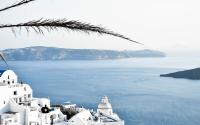11 January 2004Stacks of salmon steaks and fillets remained on ice at Chapel Street Market in Islington on Friday. Only weeks ago ago they were disappearing at a record rate, destined for millions of festive dinner tables. Now shoppers flashed a concerned glance and passed by. Farmed fish was having its mad cow moment.
Just as BSE research prompted an EU ban and shoppers' boycott of beef almost eight years ago, now public confidence was being rocked in the very foodstuff nutritionists have been telling us we must eat more of.
Salmo salar, the Atlantic salmon, is no stranger to health scares. Rarely has a month passed in recent years without a television programme or a feature in a magazine raising concerns about aquaculture, the fastest-growing sector of the global food economy. But Friday was something different.
This was not some fringe pressure group or band of tree-hugging environmentalists out to rattle cages. It was some of the world's leading experts on industrial pollution. And what they had to say was devastating: farmed salmon was poisonous. What's more, the most dangerous fish of all were salmon raised in Scotland.
Researchers based at the University of Albany in New York revealed in the journal Science how they found high levels of contaminants such as PCBs, dioxins and pesticides in Scottish fish, which is marketed around the world as a premium product. Eating more than three portions a year, they warned, risked increasing the consumer's chances of developing cancer.
In Britain, 99 per cent of salmon sold in fishmongers and supermarkets comes from Scottish farms. They moved swiftly to assuage customer fears but the impact of the findings already appears to have been powerful. Across the UK this weekend sides of smoked pink fish 'fresh from the crystal clear waters of Scotland' sat untouched on shelves alongside curiosities such as salmon nuggets and tikka bites. Staff in one branch of Tesco near Glasgow estimated that the store was shifting less than half its usual stock of farmed fish.
Back at the Islington market in London, Jamie Curtis revealed that sales had nosedived. 'I've had people coming up to me all day,' he said. 'A lot of customers have been saying that since hearing the news about the risks associated with eating salmon they're going to give it up for good.'
On hearing details of the American research, one shopper considered ditching her purchase. Nicola Burn, a 30-year-old teacher, said: 'If I had known about it I'm not so sure I would have put this packet of salmon in my basket. I'll definitely be reading the labels on fish more carefully from now on.'
Reactions like this will distress Scottish fish farmers as they begin the mammoth task this week of attempting to rebuild public trust. For them - and for Britain's baffled consumers - further confusion and uncertainty lie ahead.
The intensity of their reaction to the revelations is a clear indication of just how worried fish farmers are. In Scotland alone the business is worth £700 million and supports more than 6,500 jobs - mainly in remote areas with a history of high unemployment.
The country's 300 salmon farms produce 160,000 tonnes of fish a year. Industry representatives insisted farmed salmon was safe and claimed the American team's report was misleading. They called on support from the Food Standards Agency and politicians, who are well aware that aquaculture accounts for half of the value of all Scottish food exports.
Much of the blame for the high contamination readings has been heaped on the feed used to raise the fish. Environmentalists have long criticised this aspect of the industry as it relies on wild fish being caught and ground into pellets to feed their captive cousins. They have pointed out that it takes three tons of wild fish to produce one ton of the farmed variety. It is, therefore, fundamentally an unsustainable industry.
Now the research published in Science suggests that this feed, harvested from the polluted waters of the North Sea, results in the fish farmed in the area being more contaminated than those elsewhere.
Aquaculture critics had already pointed out that the polluted waters of the northern hemisphere produce farmed fish with contamination levels eight times greater than those in the southern hemisphere farms of Chile, Australia and Africa.
The world's largest producer of salmon feed is EWOS, based in Bathgate, West Lothian. Managing director Neil Spreckley yesterday defended the business and said it was constantly seeking to improve methods. 'Industrial pollution is not as bad as it was 20 or 30 years ago. The raw materials going into fish feed have improved. We are trying to formulate more ingredients which are lower in PCBs and dioxins such as soya and linseed vegetable oils. The problem is that salmon's natural diet is to eat fish.'
And that, say anti-aquaculture campaigners, is the problem with the entire industry. What we are witnessing with salmon now will be replicated across the dozens of other carnivorous species being reared in captivity around the world.
Projections indicate that by 2020 more farmed fish will be eaten than those caught in the wild. Already aquaculture is worth more than £30 billion a year globally and the number of species that ate being developed is rapidly increasing.
Like salmon and trout, the vast majority of sea bass and bream consumed in Britain comes from farms. Mediterranean countries such as Greece have raced ahead in the production of such species that require warmer waters. Tuna is also being developed, and the Japanese have even floated the idea of a huge minke whale farm.
Here and in Norway, though, all eyes are on halibut and cod - the great hope of aquaculture. Proponents say that both offer the prospect of cleaner, more sustainable farming than salmon.
One person who won't be serving any of them, however, is Jackie MacKenzie who worked at a fish farm in the north-west of Scotland for three years in the 1990s before quitting over concerns that the chemicals he was using were having a detrimental effect upon his health.
'There used to be fresh salmon on the table when I was a boy,' he told The Observer. 'But that was a different fish to what we get now. I wouldn't feed my children the stuff that comes out of these farms.'
He claimed that the aquaculture industry had taken a quality product and turned it into 'gunk'. Wild salmon, he said, was a firm, muscular, healthy fish. What now masqueraded as the king of fish was a flabby, dyed-pink beast that bore little resemblance to its wild relative.
He warned that it was inevitable that other species would develop problems in captivity. 'All fish have their diseases, and when you cram lots of them into a confined space it is inevitable the disease will spread. Then chemicals are introduced in an attempt to control things.'
Along with feed and chemicals, MacKenzie lists escaping fish as one of the main, unavoidable problems of sea-cage fish farming. Wherever there are fish in captivity, there are jailbreaks. Inevitably, wild populations are affected. A Pacific salmon from farms in contaminated waters off the north-west coast of Russia was recently found in Scotland.
Diseases are passed on, and cross-breeding has resulted in deformities and genetic mutations that have seen a stark drop in wild salmon stocks since farms arrived in Scotland in the late 1970s.
MacKenzie and other anti-aquaculture campaigners welcome the Albany report, claiming that for years they were seen as crackpots standing in the way of progress. 'Finally the concerns we have are being recognised by others,' said the ex-fish farmer.
The revelations in the journal Science come as it is revealed that 27 imports of smoked salmon were last year condemned by the powerful US government watchdog, the Food and Drug Administration, as unfit for human consumption following random checks.
These included 15 shipments of smoked salmon which were turned away because they were contaminated with listeria and a further nine salmon shipments from Scotland which were classified as 'insanitary'.
In Britain, a million Scottish-farmed salmon a week were sold during the Christmas period. Thousands more trout, sea bass, sea bream and cod that lived and died in captivity were also eaten. None, however, passed the MacKenzie family's lips. It appears that many more families up and down the country are now following their lead.
·How fish are farmed
Atlantic salmonMain producers are Norway, Chile and Scotland. Worldwide production exceeds one million tonnes a year. Between 5,000 and 50,000 fish are held in sea cages. The colourings astaxanthin and canthaxanthin are used to dye flesh pink. Fish are treated with antibiotics, injected with vaccines and fed on fishmeal and oil extracted from 'trash fish' living in polluted waters. As a result, farmed salmon contain carcinogenic PCBs, dioxins and mercury as well as pesticides.
Rainbow trout Raised in France, Italy, Denmark and the UK. Britain produces 35 million fish a year. As with salmon, antibiotics, vaccines and colourings are heavily used.
Cod Norway hopes to farm 10,000 tonnes this year. Like salmon, the fishmeal fed to cod contains PCBs, dioxins and other pollutants. Stocking densities in cages are similar to salmon, with higher mortality rates.
Halibut Production in its infancy, led by Norway followed by Iceland and Scotland. Reared on a diet of live plankton, followed by fishmeal pellets, they are exposed to the same drugs, pollutants.
Sea bass/sea bream Greece accounts for 60 per cent of European production. A temperatures of 20C is required, hence the proliferation of warm-water bugs.
Tuna Mainly farmed in Spain, Croatia, Italy and Malta to supply Japan. In 2001, just 12 Mediterranean farms produced 11,000 tonnes of bluefin - half the global total.
Turbot Production is centred on France, Spain, Ireland and Scotland and totals 6,000 tonnes. The breeding cycle of turbot is similar to that of halibut, and farmers use similar technology. Viral haemorrhagic septicaemia led to the closure of a farm on Gigha in 1994.
·Other food health scares
Kiwi fruit Despite its famed health benefits, it was found to make two-thirds of children ill when they ate it for the first time. According to a report published in May 2003, symptoms ranged from a tingling in the throat to severe wheezing and collapse. The Food Standards Agency advised parents to be alert.
Potatoes Fried and oven-baked potatoes were reported to contain dangerously high levels of acrylamide, a substance that might cause cancer. In April 2002, researchers in Sweden reported that the chemical was formed when foods that contain carbohydrate, such as potatoes and cereals, a re-fried or baked at high temperatures (above 120C).
Coffee In addition to the known risks of a high caffeine intake, pregnant women were reported to suffer an increased danger of having a stillborn baby if they drank coffee. Women who drank more than eight cups of coffee a day had a 300 per cent greater risk of stillbirth, compared with those who drank none during pregnancy, according to a report by a Danish university.
Ice cubes Even ice cubes could not avoid the wrath of the health inspectors. The Health Protection Agency found almost half the ice cubes that it tested in London bars contained bugs found in human faeces, with 5 per cent containing the lethal E.coli
http://observer.guardian.co.uk/uk_news/story/0,6903,1120499,00.html






